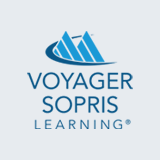My Teacher Said I Was Smart So I Was: Motivating Students of All Levels
Raise your hand if you’ve ever racked your brain for ways to motivate a particular student or group of students. OK—hands down.
As educators, we understand motivation is the key that unlocks learning. That’s true for all of us, no matter our age. If we’re not motivated to do something, we procrastinate. When we finally get started, completion may take longer because the task doesn’t seem valuable and we lack motivation.
The same is true—perhaps even more so— for students. They may not recognize the intrinsic value of learning. Therefore, it’s up to us to motivate them. And motivation comes in many forms, for different ages and grade levels. Countless articles and blogs have been written about student motivation—some general and others targeted toward different grade spans such as primary, upper elementary, and secondary.
Before drilling down to those grade spans and thinking about detailed strategies, let’s ask ourselves three overarching questions. Answers to these questions may help set the stage for motivation and student success—at any grade or level.
Have I set realistic expectations and explained the “Why” behind them?
Though most students won’t admit it, they want parameters. Parameters offer a sense of comfort, order, and consistency. However, it’s not enough to generalize as in, “I expect your best behavior in my class.” “Best behavior” is open to interpretation—specific expectations are not.
Recently, I spent one instructional period in an eighth grade math intervention class. Posted on a chart in the front of the room was a bulleted list of three expectations, including:
- Arrive in class on time, prepared to work and learn.
- Have three items with you every day: your homework, a pencil with an eraser, and your attention.
- Speak and act respectfully to me and to the other students in this class.
The day’s lesson was conducted with intensity but with warmth and good humor. Teacher/student mutual respect was obvious. While the teacher assisted some students individually, several other students assisted peers.
Later that day, when I met with the teacher, I asked about the list and all the behaviors I observed as subsets of the three expectations. She explained that she had presented her expectations the first day of school, discussed them at length in class, and reinforced them until they became part of what she referred to as “muscle memory.” Did everything run smoothly every day? Doubtful—it IS middle school after all. But many more class periods were successful than not.
Is my praise targeted and meaningful?
Praise is an important part of motivating students but it’s essential to be thoughtful in its use so it doesn’t become trivial. When praise is offered to the same degree, and as often, whether the achievement is great or small, it becomes less meaningful.
So, instead of thinking about frequent, copious amounts of praise as the way to motivate, think about degrees of praise set around targeted expectations. Here’s an example using the eighth grade math class previously discussed.
The three bulleted points were expectations set from the beginning of the school year. Lavish praise isn’t needed for students remembering to bring homework and a pencil to class. However, it may be appropriate to offer special praise to any student who took time to assist and share knowledge with another student when the teacher was already engaged with someone. That praise serves a dual purpose. It recognizes the student’s grasp of content and it demonstrates appreciation for the student’s initiative, both of which further motivate a student.
Do I remember to teach students first and content second?
“What!?” You’re already saying. “Content is the reason for school. Student mastery of content is how I’m judged in my job.”
You’re correct. Content IS critical and an end result of education. But to help students master content, we need to consider instructional best practices such as recognizing/accommodating different learning styles and providing differentiated instruction as needed. Many teachers of young students do this as a matter of course but, as secondary teachers, we may need to be reminded that it’s equally important at our levels.
Incorporating these strategies at every grade level could make students feel more confident and successful which, in turn, might mitigate negative classroom behaviors that arise when students have difficulty with the content. In short, if we use strategies that focus on teaching the student, the content might come a lot faster.
So, what is the principal take-away for how to motivate students?
It is this: When planning classroom structure and instruction, think about “Big Picture” strategies that apply to all grades and content areas. Then, the specifics will fill in naturally.


